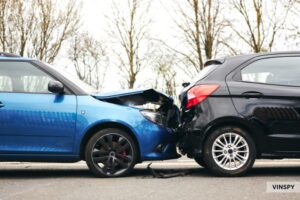Safest Roads in Europe: A Deep Dive into Road Safety in Norway, Sweden, and Switzerland
When it comes to road safety, Europe boasts some of the safest driving environments in the world. With innovative traffic management systems, robust road infrastructure, and forward-thinking governmental policies, certain countries are leading the charge in reducing accidents and fatalities. In this article, we will explore the safest roads in Europe, focusing on Norway, Sweden, and Switzerland, which have consistently ranked high in road safety performance. We’ll also highlight specific safety measures and showcase the top safest roads in these countries.
Why Road Safety Matters
Safety on the road is a critical concern for drivers, and it becomes even more important when buying a used vehicle. Many factors contribute to road safety, including vehicle quality, road conditions, and driver behavior. Before hitting the road, ensuring your vehicle has a clean history through a VIN check is one essential precaution. But beyond the vehicle, the road itself plays a significant role in minimizing accidents.
1. Norway: Leading the Way with Road Safety
Norway is often regarded as one of the countries with the safest roads in Europe. According to the European Road Safety Observatory (ERSO), Norway consistently reports some of the lowest road traffic death rates per capita in Europe. In 2022, the country recorded only 1.5 deaths per 100,000 inhabitants, significantly lower than the European average.
Road Safety Initiatives in Norway
- Vision Zero: Norway is a pioneer of the Vision Zero approach, a road safety philosophy that aims to eliminate all traffic fatalities and serious injuries. This policy places a heavy emphasis on road design, speed management, and safety culture.
- Traffic Management Systems: Advanced traffic management systems are in place to ensure smooth traffic flow and prevent congestion-related accidents. Smart traffic signals and adaptive speed limits are common on major highways.
- Driver Education: Norway has a robust driver education program that emphasizes safe driving practices. New drivers must undergo extensive training, which includes defensive driving courses.
Top Safest Roads in Norway
- E6 Highway: The E6 is Norway’s main north-south motorway, running from the southern tip near Oslo to the far northern regions of the country. This road benefits from frequent maintenance and cutting-edge safety measures, such as median barriers and clear signage.
- E18 Motorway: Connecting Oslo to the southeastern parts of Norway, the E18 features advanced road technology, including dynamic lane controls and weather-responsive traffic systems that adjust to snow and ice conditions.
2. Sweden: A Legacy of Road Safety
Sweden is another country known for having some of the safest roads in the world. In fact, the country’s roads are so safe that the World Health Organization (WHO) often cites Sweden as a model for global road safety efforts. In 2022, Sweden reported just 2.1 deaths per 100,000 inhabitants.
Road Safety Initiatives in Sweden
- Swedish Vision Zero: Like Norway, Sweden adopted Vision Zero in the late 1990s. This approach focuses on designing roads that minimize human error and reduce the consequences of accidents, such as installing crash barriers and roundabouts.
- Speed Management: Sweden has a dynamic speed limit system where limits can change based on traffic, road conditions, and weather. These adaptive systems have contributed to the significant reduction in accidents.
- Infrastructure Improvements: Sweden has invested heavily in building divided highways with center barriers to reduce head-on collisions. Road markings and signage are also highly visible, especially in areas prone to bad weather conditions.
Top Safest Roads in Sweden
- E4 Highway: One of Sweden’s longest highways, the E4 stretches from the southern city of Helsingborg to the northern border with Finland. This highway is famous for its well-maintained surfaces and intelligent road systems that monitor traffic flow and adjust speed limits based on real-time data.
- E22 Motorway: Running along the eastern coast of Sweden, the E22 is designed with multiple safety features such as wide lanes and clear road signage, making it one of the safest coastal routes in Europe.
3. Switzerland: A Perfect Mix of Technology and Nature
Switzerland, known for its mountainous terrain and scenic landscapes, also has some of the safest roads in Europe. In 2022, Switzerland recorded 2.7 deaths per 100,000 inhabitants, a figure far below the European average.
Road Safety Initiatives in Switzerland
- Traffic Surveillance: Switzerland relies heavily on traffic surveillance systems that monitor speed and detect violations. The use of cameras and sensors on major roads has significantly reduced the number of speeding incidents.
- High-Quality Road Infrastructure: Swiss roads are renowned for their excellent quality. Regular maintenance and timely upgrades ensure that roads remain in optimal condition, even in the harsh winter months.
- Mountain Road Safety: Given the country’s terrain, special attention is paid to mountain roads. These roads often feature crash barriers, sharp turn warnings, and runaway truck ramps to mitigate risks associated with steep declines.
Top Safest Roads in Switzerland
- A1 Highway: The A1 is Switzerland’s longest motorway, connecting the cities of Geneva and Zurich. Known for its impeccable road quality, the A1 is equipped with smart traffic lights and frequent surveillance to ensure a smooth driving experience.
- Gotthard Pass Road: This iconic mountain road is a testament to Swiss engineering, featuring tunnels, safety barriers, and clear signage that make it one of the safest mountainous roads in Europe.
Reasons for Safety on Europe’s Best Roads
There are several key reasons why roads in Norway, Sweden, and Switzerland stand out as some of the safest in the world:
- Speed Limits: Strict enforcement of speed limits plays a huge role in reducing accidents. In these countries, speed cameras and variable speed limits adjust based on traffic and weather conditions.
- Road Conditions: The road surfaces are regularly maintained, ensuring fewer potholes and cracks. This leads to smoother driving experiences and fewer accidents caused by poor road quality.
- Surveillance and Monitoring: All three countries have invested heavily in road surveillance, with cameras monitoring traffic flow, speed, and violations. This discourages reckless driving and enforces traffic laws effectively.
- Driver Education: Comprehensive driver training and testing programs ensure that new drivers are well-prepared for different driving conditions. This contributes significantly to lower accident rates.

Most Dangerous Roads in Europe: Where Driving Risks Are Highest
While Europe is home to some of the safest roads in the world, it also harbors some of the most dangerous roads, particularly in specific regions with higher accident rates. From treacherous mountain passes to poorly maintained highways, these roads present challenges that demand heightened caution. In this post, we’ll take a close look at the high-risk countries and regions in Europe, explore some of the most infamous dangerous roads, and delve into the contributing factors that make these roads particularly hazardous.
1. High-Risk Countries or Regions for Road Accidents in Europe
Although Europe is generally known for its advanced road safety infrastructure, some countries and regions experience higher rates of road accidents than others. Eastern Europe, Southern Europe, and certain mountainous areas tend to have more dangerous roads due to a variety of factors, including poor road conditions, lack of safety infrastructure, and challenging driving environments.
Eastern Europe
Countries in Eastern Europe, such as Romania, Bulgaria, and Poland, have some of the highest road fatality rates in Europe. According to the European Road Safety Observatory (ERSO), Romania has a road traffic death rate of 9.8 per 100,000 inhabitants, making it one of the highest in Europe. In comparison, the European Union average is around 5.1 per 100,000.
In these countries, road safety is often compromised due to outdated infrastructure, lack of proper lighting, and poor road maintenance. Many rural areas also lack adequate signage and safety barriers, making accidents more likely.
Southern Europe
In countries like Italy, Spain, and Portugal, certain roads, particularly in mountainous or rural areas, are notorious for being dangerous. While these countries boast well-developed motorways, the more isolated roads can be winding, narrow, and difficult to navigate. Italy, for example, sees a high number of accidents on its mountain roads and rural highways, especially in areas like the Alps and Apennines.
Key Factors in High-Risk Countries
- Outdated infrastructure: Many roads in Eastern Europe were built decades ago and have not been upgraded to meet modern safety standards.
- Rural roads: These roads are often poorly maintained and lack critical safety features such as guardrails and proper lighting.
- Economic factors: Countries with lower GDPs tend to invest less in road safety initiatives, leaving drivers more vulnerable to accidents.
2. Famous Dangerous Roads in Europe
While some roads in Europe are marvels of engineering, others are known for their treacherous conditions, sharp curves, and high accident rates. Here’s a look at some of Europe’s most notorious roads.
Romania: Transfagarasan Highway
Dubbed one of the most dangerous roads in Europe, the Transfagarasan Highway is an awe-inspiring, yet perilous route that winds through the Carpathian Mountains in Romania. Stretching for 90 kilometers, this road climbs to an altitude of over 2,000 meters and is famous for its sharp hairpin turns, steep drop-offs, and lack of safety barriers.
- Challenges: The Transfagarasan is prone to bad weather, especially in the colder months when snow and fog can make driving extremely hazardous. Additionally, the road’s narrow lanes and tight corners leave little room for error.
- Contributing factors: Poor visibility, lack of guardrails, and sharp turns make this road particularly dangerous for inexperienced drivers.
Montenegro: Kotor Serpentine (P1)
The Kotor Serpentine, also known as the P1 road, is another contender for one of Europe’s most treacherous roads. Located in the mountainous regions of Montenegro, this road features a series of steep, hairpin bends that climb from the bay of Kotor to the highlands above.
- Challenges: The road is extremely narrow, often lacking guardrails, and provides little space for vehicles to pass each other safely. Its dangerous hairpin turns and steep inclines make it challenging, especially for larger vehicles like buses and trucks.
- Contributing factors: Steep gradients, poor road maintenance, and unpredictable weather conditions.
Italy: Stelvio Pass
The Stelvio Pass in northern Italy is one of the highest paved mountain passes in the Alps and is widely known for its scenic beauty—and its peril. At an altitude of 2,757 meters, this road features 48 hairpin turns and offers minimal protection from steep drops.
- Challenges: Stelvio Pass is often subject to rapidly changing weather conditions, including snow and ice, even during summer months. The narrow lanes and frequent switchbacks demand precise driving and full concentration.
- Contributing factors: Tight curves, high altitudes, and heavy tourist traffic during peak seasons make this road dangerous.
France: Col de la Bonette
Located in the French Alps, the Col de la Bonette is one of the highest roads in Europe, reaching an altitude of 2,715 meters. Known for its dizzying heights and lack of protective barriers, this road is particularly dangerous due to its steep inclines and narrow paths.
- Challenges: The road is prone to landslides and rock falls, and the weather can be unpredictable, with snow and ice creating slippery conditions.
- Contributing factors: Lack of crash barriers, extreme altitudes, and exposure to the elements make it one of the most perilous roads in Europe.
3. Contributing Factors to Road Danger
There are several factors that make these roads particularly dangerous. Whether it’s the natural environment or a lack of modern infrastructure, these roads require extra caution from drivers.
1. Poor Road Conditions
In many parts of Europe, especially in Eastern and Southern regions, poor road conditions are a major contributing factor to accidents. Potholes, cracked surfaces, and uneven lanes can cause drivers to lose control, particularly at high speeds or when navigating sharp curves.
2. Bad Weather
Mountainous regions such as the Alps and Carpathians are prone to severe weather conditions, including heavy snow, fog, and ice, which dramatically increase the risk of accidents. Bad weather is a common factor on roads like the Transfagarasan Highway and the Stelvio Pass, where icy conditions make navigating steep inclines and sharp turns dangerous.
3. Sharp Turns and Narrow Lanes
Many of Europe’s most dangerous roads are located in mountainous regions, which are often characterized by sharp bends and narrow lanes. Roads like the Kotor Serpentine in Montenegro and the Col de la Bonette in France require a high level of driving skill and caution, as there is little room for error.
4. Lack of Safety Infrastructure
Many of the roads mentioned above are dangerous due to the lack of essential safety features like guardrails and proper signage. In countries where road maintenance is not a priority, drivers face additional hazards such as poor lighting and inadequate warning signs, increasing the likelihood of accidents.
5. Heavy Traffic and Tourists
Tourist traffic can also contribute to road danger, especially on scenic roads like the Stelvio Pass and the Col de la Bonette. During peak tourist seasons, these roads become congested with drivers who may not be familiar with the challenges of navigating mountainous terrain.
How to Stay Safe on Europe’s Dangerous Roads
Plan Your Route: If you’re planning to drive on any of these roads, make sure to check weather conditions and road advisories ahead of time. In areas prone to extreme weather, such as the Transfagarasan Highway or Stelvio Pass, it’s crucial to know if the road is open and safe.
Conduct a Vehicle Safety Check: Ensure that your vehicle is in optimal condition by checking tires, brakes, and lights. For those driving a used car, a VIN check can provide important information about the vehicle’s history, including any previous accidents or recalls that could affect its performance on dangerous roads.
Drive Slowly and Carefully: On narrow, winding roads like the Kotor Serpentine, maintaining a safe speed and being cautious around turns can make all the difference. Avoid overtaking other vehicles unless you’re absolutely certain it’s safe.
Use Proper Equipment: If you’re driving in mountainous regions, equip your vehicle with snow tires and chainsif necessary. This is especially important in winter months when roads like the Col de la Bonette may be covered in ice or snow.
Road Safety in Europe: Statistics, Data, and Leading Causes of Accidents
When it comes to road safety in Europe, data and statistics offer valuable insights into the regions where drivers face the highest risks and help authorities implement safety measures. In this post, we’ll explore comprehensive road safety statistics, with a focus on comparing accident rates across European regions, identifying the leading causes of accidents, and suggesting ways to reduce these risks.
Data-driven insights provide context for understanding road safety and give drivers a clear picture of where they need to exercise the most caution. By analyzing statistics, we can better understand the primary causes of road accidents, ranging from speeding and poor maintenance to weather conditions.
1. Road Safety Statistics Across European Regions
European countries exhibit significant variation in road safety performance. Certain regions, particularly in Northern and Western Europe, tend to have some of the safest roads due to modern infrastructure and stringent regulations. However, Eastern and Southern Europe show higher accident rates due to a variety of factors, including older infrastructure and economic disparities.
Let’s take a closer look at the data.
Accident Rates in Europe (2022)
The table below highlights the road traffic death rate per 100,000 inhabitants across various European regions.
| Country/Region | Road Traffic Death Rate (per 100,000) |
|---|---|
| Norway | 1.5 |
| Sweden | 2.1 |
| Switzerland | 2.7 |
| United Kingdom | 2.8 |
| France | 4.6 |
| Spain | 3.9 |
| Italy | 5.2 |
| Germany | 4.1 |
| Romania | 9.8 |
| Bulgaria | 10.4 |
| Poland | 8.4 |
| Montenegro | 7.6 |
Regional Insights
- Northern Europe: Countries like Norway, Sweden, and Denmark have some of the lowest traffic death rates due to advanced safety measures, including road quality, intelligent traffic management systems, and strict law enforcement.
- Western Europe: Nations like the United Kingdom, France, and Germany also boast relatively low accident rates thanks to high-quality infrastructure and strong safety regulations.
- Eastern Europe: Unfortunately, countries such as Romania, Bulgaria, and Poland rank much higher in terms of road fatalities, often due to outdated infrastructure and lower investment in road safety measures.
Interactive suggestion: For a better understanding, an interactive graph comparing road traffic death rates across different European countries would provide readers with a clearer visual representation of the safest and most dangerous regions to drive in Europe.
2. Leading Causes of Road Accidents in Europe
Understanding the leading causes of road accidents can provide insights into why certain roads or regions experience higher accident rates. These causes often include speeding, poor road maintenance, and adverse weather conditions.
Speeding
Speeding is one of the most significant factors contributing to road accidents, particularly on highways and rural roads. Research from the European Transport Safety Council (ETSC) highlights that speeding is responsible for around 30% of fatal crashes across Europe.
- Western Europe: Despite having stringent speed limits, Germany sees higher-than-average accident rates on its Autobahn, where no general speed limit applies. The lack of a speed cap on some stretches has led to serious high-speed crashes.
- Eastern Europe: In countries like Romania and Bulgaria, excessive speeding on rural roads without proper signage or enforcement is a major contributor to road fatalities.
Poor Road Maintenance
In Eastern and Southern Europe, poor road maintenance is a leading cause of accidents. Potholes, eroded road surfaces, and insufficient markings are widespread, particularly in rural areas.
- Romania and Poland suffer from a lack of regular road maintenance, which leads to unsafe driving conditions, especially on highways. Potholes and uneven road surfaces can cause vehicles to lose control, especially when drivers are traveling at higher speeds.
- Southern Italy: Certain roads in Southern Italy are notorious for poor maintenance, with roads in rural and mountainous regions particularly prone to accidents. Lack of investment in infrastructure exacerbates these issues.
Adverse Weather Conditions
Weather is another major factor in European road accidents, especially in Northern and mountainous regions. Snow, ice, and fog increase the likelihood of accidents due to reduced visibility and slippery road conditions.
- Alps and Pyrenees: These regions experience severe winter weather, leading to dangerous driving conditions. Roads such as Italy’s Stelvio Pass and France’s Col de la Bonette become hazardous during the winter months due to ice and snow.
- Norway and Sweden: Although these countries have some of the best road safety records, weather-related accidents still occur during the winter months, particularly when drivers fail to use appropriate snow tires.
Distracted Driving
With the rise of technology, distracted driving has become a growing problem in Europe, especially in urban areas. The European Commission reports that distraction is responsible for about 10% of fatal crashes.
- In cities like Paris, London, and Berlin, the use of mobile phones while driving has led to an increase in rear-end collisions and side-impact crashes. Distracted driving is more common in urban areas due to higher traffic density and the frequent need for navigation.
Interactive suggestion: A bar chart breaking down the percentage of accidents caused by various factors (speeding, poor road conditions, weather, etc.) across different European regions could be highly effective in helping readers visualize the biggest risks they face.
3. Comparative Analysis of Accident Causes
To provide a deeper understanding of the leading causes of accidents, here’s a table summarizing the top factors that contribute to road crashes across Europe:
| Cause | Percentage of Fatal Accidents in Europe |
|---|---|
| Speeding | 30% |
| Poor Road Maintenance | 15% |
| Adverse Weather | 12% |
| Distracted Driving | 10% |
| Drunk Driving | 8% |
| Fatigue | 6% |
| Vehicle Defects | 5% |
Speeding: Across all regions, speeding remains the most dangerous behavior, particularly in countries with fewer speed cameras or lenient enforcement. It is responsible for almost one-third of all fatal accidents.
Poor Road Maintenance: In countries with lower infrastructure investment, such as Bulgaria and Poland, poorly maintained roads are a leading cause of accidents, contributing to 15% of all fatalities.
Adverse Weather Conditions: In Northern and mountainous regions, weather conditions such as fog, ice, and snowlead to around 12% of all fatal accidents.

4. Road Safety Solutions to Reduce Accidents
Given the leading causes of accidents, European road safety organizations have implemented several initiatives aimed at reducing fatalities. Some of the most effective strategies include:
1. Strict Enforcement of Speed Limits
Countries like Sweden and Norway have effectively reduced road fatalities by enforcing strict speed limits on both highways and rural roads. In addition, the installation of speed cameras and automated fines has proven to be an effective deterrent.
2. Improved Road Infrastructure
Investment in road maintenance and the construction of safer roads is crucial in reducing accidents in high-risk countries. Romania and Bulgaria have both launched extensive infrastructure programs aimed at improving road surfaces and installing crash barriers in dangerous areas.
3. Enhanced Weather Preparedness
Countries like Switzerland and Norway have significantly reduced weather-related accidents by investing in advanced road weather information systems (RWIS), which provide real-time data on road conditions. This allows drivers to make informed decisions and adjust their speed accordingly.
4. Education and Awareness Campaigns
Public safety campaigns aimed at reducing distracted driving and drunk driving have also proven to be effective in countries like Germany and France. These campaigns emphasize the dangers of driving while impaired or distracted by mobile devices.
Conclusion: Leveraging Data to Improve Road Safety in Europe
By analyzing road safety statistics and understanding the leading causes of accidents, we can take proactive steps to improve driving conditions and reduce fatalities across Europe. Speeding, poor road conditions, and adverse weather are just some of the primary risk factors that contribute to road accidents, and addressing these challenges is key to making European roads safer for everyone.
For those driving a used vehicle, it’s also important to ensure that your car is in optimal condition. Conducting a thorough VIN check can help uncover any hidden issues with the vehicle’s history, ensuring it’s ready for even the most challenging roads. By combining vehicle safety checks with road safety awareness, drivers can better navigate Europe’s most dangerous routes.
Sources
- [European Road Safety Observatory (ERSO)](https://ec.europa.eu/transport/road_safety/specialist/statistics
Real-Life Stories and Case Studies: The Importance of Vehicle History in Preventing Road Accidents
When it comes to road safety, knowing the history of your vehicle is as important as maintaining the vehicle itself. Every year, thousands of drivers across Europe face accidents due to hidden defects, previous damage, or undisclosed recalls. In this post, we’ll explore real-life stories of drivers who faced accidents due to unsafe vehicles, showcasing how a lack of knowledge about a vehicle’s past can lead to catastrophic consequences. These case studies emphasize the critical importance of performing a thorough VIN check before purchasing a used vehicle.
1. The Consequences of Ignoring a Vehicle’s History: Mark’s Story
Mark, a 34-year-old driver from Manchester, had been searching for a used car that fit his budget. After weeks of research, he found what appeared to be a great deal on a second-hand Ford Fiesta. The seller assured him the car was in perfect condition, with no previous accidents. However, eager to finalize the purchase, Mark decided to skip a VIN checkand took the car for a test drive.
Unfortunately, just six months later, Mark was involved in a serious accident on a rainy motorway. As he tried to brake to avoid hitting the car in front of him, the brakes malfunctioned, causing his car to skid and crash into the barrier. Mark suffered minor injuries, but his car was completely totaled.
What Mark Didn’t Know: A Hidden Past
After the accident, Mark decided to investigate the car’s history. He discovered that the vehicle had been involved in a severe accident three years prior, which resulted in major damage to the car’s braking system. Despite repairs, the underlying issue was never fully resolved, and the seller failed to disclose this information during the sale.
Had Mark performed a VIN check before purchasing the car, he would have discovered the accident history and avoided buying a vehicle with such a significant defect.
2. Faulty Airbags and a Recalled Vehicle: Maria’s Near-Fatal Experience
In another chilling example, Maria, a 28-year-old student living in Rome, purchased a used Honda Civic for her daily commute. The car seemed to be in good working condition, and the seller assured her that there were no mechanical issues. However, Maria didn’t realize that the vehicle had been part of a massive recall due to faulty airbags as part of the Takata airbag scandal. Like many buyers, she trusted the seller and did not conduct a VIN check before the purchase.
The Incident
One year into owning the car, Maria was involved in a head-on collision. When the airbags deployed, they malfunctioned and exploded with excessive force, sending metal shards flying through the vehicle. Maria suffered severe injuries, including a punctured lung and facial lacerations. After weeks in the hospital, she learned that her car was part of a recall issued by Honda years before the accident.
The Hidden Recall
The VIN check would have alerted Maria to the fact that her car was included in a recall for defective airbags. Unfortunately, without this critical information, she was left vulnerable to a serious malfunction that almost cost her life.
3. Undisclosed Structural Damage: John’s Costly Mistake
John, a professional truck driver from Bucharest, Romania, purchased a second-hand Audi A4 from a private seller online. The car appeared to be in excellent condition and had a relatively low price compared to similar models. However, John decided to bypass a VIN check, trusting the seller’s word that the car had no major issues.
After six months of driving, John noticed that the car’s alignment was consistently off, pulling to one side. Despite several visits to mechanics, the problem persisted, and John became increasingly concerned about the car’s safety. Finally, after another inspection, it was revealed that the car had previous structural damage from a major collision. The damage was so severe that the frame had been compromised, making the vehicle unsafe to drive.
Structural Issues Discovered Too Late
A VIN check would have revealed the vehicle’s accident history and significant frame damage, which was never properly repaired. John’s oversight cost him thousands of euros in repairs, not to mention the safety risks he unknowingly exposed himself to every time he got behind the wheel. He later sold the car at a loss, wishing he had taken the time to properly vet the vehicle’s history before purchasing.
4. Dangerous Modifications: Petra’s Brush with Disaster
Petra, a 42-year-old business owner from Berlin, was thrilled when she bought her dream car—a used BMW X5. The car looked pristine, and the price seemed fair, so she completed the purchase without a VIN check. However, after a few months of driving, Petra began experiencing strange handling issues, particularly during sharp turns and at high speeds.
One day, while driving on the Autobahn, Petra lost control of the vehicle during a lane change, causing her to spin out. Miraculously, she managed to avoid a collision, but she was left shaken and unsure of what had gone wrong.
Unapproved Modifications
Upon further inspection, Petra’s mechanic discovered that the previous owner had made several dangerous modificationsto the suspension system, which compromised the car’s stability. These modifications were not disclosed during the sale, and because Petra skipped the VIN check, she had no idea the vehicle had been altered.
Had Petra performed a VIN check, she would have been alerted to the vehicle’s non-standard modifications, which would have prompted her to either avoid the purchase or demand further information from the seller.
5. Salvage Titles and Unfit Vehicles: Tom’s Learning Experience
Finally, Tom, a 30-year-old engineer from Brussels, made the classic mistake of purchasing a car that had a salvage title—without realizing it. He bought a Volkswagen Passat from a small dealership, attracted by the low price and relatively good condition of the vehicle. However, what Tom didn’t know was that the car had been declared a total loss after a flood several years prior.
The Aftermath
Months after the purchase, Tom began experiencing electrical problems. The car’s systems would malfunction, the lights would flicker, and the engine would occasionally fail to start. After taking it to a mechanic, Tom learned that the vehicle’s electrical system had been heavily damaged by water, a lingering consequence of the flood it had been through.
The dealership had cleaned up the car’s exterior and interior to make it look presentable, but the flood damage had irreparably compromised the vehicle’s long-term functionality. If Tom had performed a VIN check, he would have known about the car’s salvage title and avoided purchasing a vehicle with extensive water damage.
The Importance of a VIN Check: Protecting Yourself from Hidden Dangers
These real-life stories underscore the critical importance of performing a VIN check before purchasing any used vehicle. Whether it’s hidden accident history, unapproved modifications, or undisclosed recalls, skipping this essential step can lead to dangerous situations that could have been avoided.
What a VIN Check Can Reveal:
- Accident History: Information about any previous accidents and whether the vehicle was repaired properly.
- Recalls: Alerts for any active recalls, including issues related to safety components like airbags or brakes.
- Salvage Titles: Whether the vehicle has been declared a total loss and rebuilt after a major incident.
- Modifications: Any major modifications that may not comply with safety regulations.
- Odometer Fraud: Checks to ensure the mileage has not been tampered with.
By running a VIN check, you can uncover the full history of the vehicle, providing you with the information you need to make an informed decision. Never skip this step—it could save your life or prevent you from buying a costly, unsafe vehicle.



